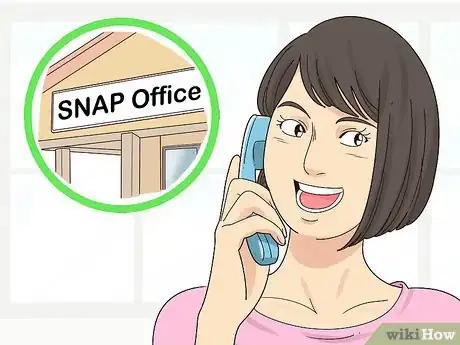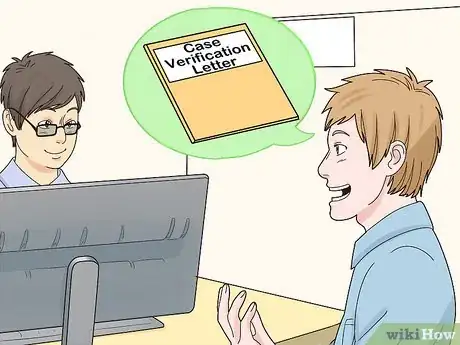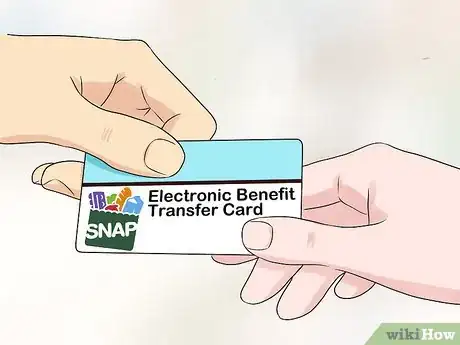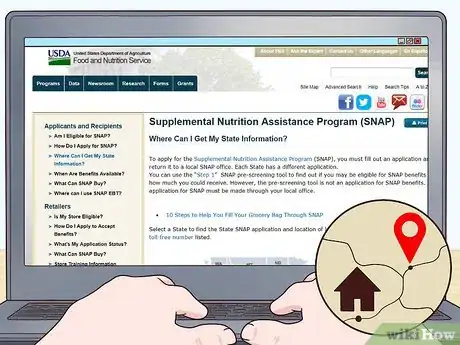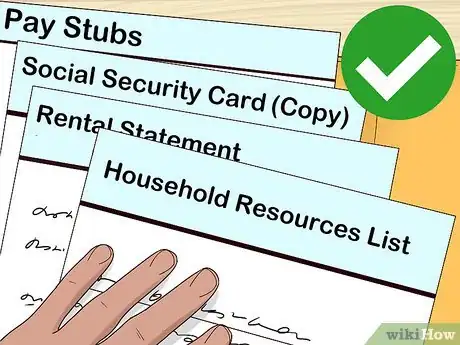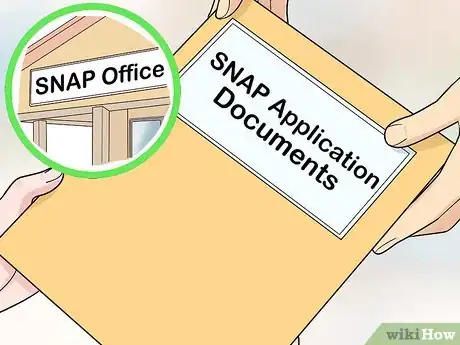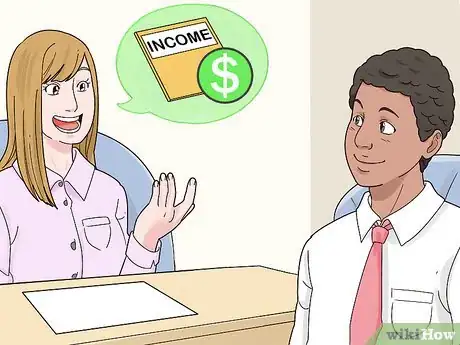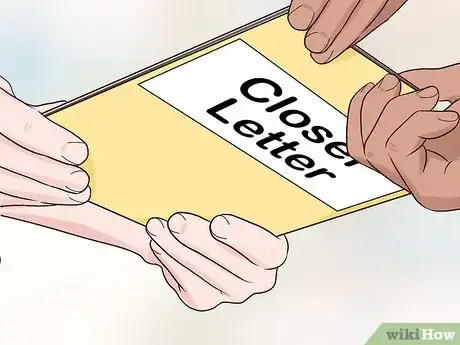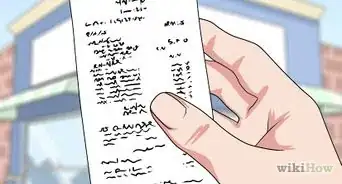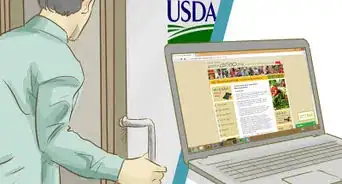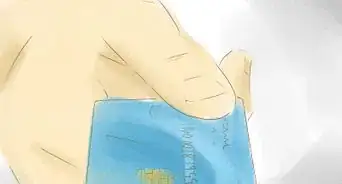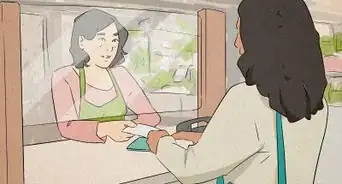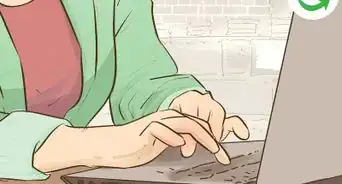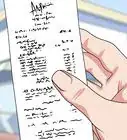This article was written by Jennifer Mueller, JD. Jennifer Mueller is an in-house legal expert at wikiHow. Jennifer reviews, fact-checks, and evaluates wikiHow's legal content to ensure thoroughness and accuracy. She received her JD from Indiana University Maurer School of Law in 2006.
There are 8 references cited in this article, which can be found at the bottom of the page.
wikiHow marks an article as reader-approved once it receives enough positive feedback. In this case, 90% of readers who voted found the article helpful, earning it our reader-approved status.
This article has been viewed 154,008 times.
Even though the Supplemental Nutrition Assistance Program (SNAP, previously known as "food stamps") is a federal program, it is run on the state level.[1] If you move within a state, you can simply transfer your case to the office in your new county. However, no individual state or U.S. territory can transfer food stamps from one state or territory to another. Instead, you must first close your case in the state you're moving from. Then when you move to the new state, apply to open a new case in that state.[2]
Steps
Closing Your Case in Your Old State
-
1Contact your local SNAP office. Typically you cannot close your SNAP case online. The office may be willing to mail forms to you, but usually you must go to the office in person to request your case closed.[3]
- Call the office and explain that you are moving to a different state and want to close your case. Follow their instructions so your case is closed properly. If your case isn't closed in your old state, it may be difficult to get benefits in your new state.
- Try to get the process started a week or two before you move. Although they should be able to close your case immediately, this gives you some time in case an issue arises.
-
2Complete a change report form. In some states, you may be required to fill out a form reporting your change in residence before your case can be closed. You may have to go into the office and fill this form out in person.[4]
- In some states you can also download the form online and mail it in, or have the office mail it to you.
Advertisement -
3Request a letter verifying your case was closed. It is illegal to receive SNAP benefits in more than one state. An official letter stating that your case was closed may enable you to open a case more smoothly in your new state.[5]
- The letter should state the exact date your case was closed, and the amount of benefits, if any, that remained available to you after that date.
-
4Use your remaining benefits. If you were not using all of your benefits each month, you may still have some remaining after your case is closed. Those benefits will continue to be available to you, even if you open a case in another state.[6]
- You can use your SNAP electronics benefit transfer (EBT) card in any US state or territory.[7]
Opening a Case in Your New State
-
1Locate the local SNAP office. Once you've moved to your new state, you must re-apply for SNAP benefits using the application forms and procedures in that state. You may be able to apply online, but you may need to go to the local office for an interview.
- The US Department of Agriculture (USDA) has a map of SNAP office locations nationwide. You can find the SNAP office nearest you by going to https://www.fns.usda.gov/snap/state-directory and clicking on your state.
- You can also call your state's SNAP hotline. The USDA has a list of these numbers available at https://www.fns.usda.gov/snap/state-informationhotline-numbers.
- It might be helpful to look up any specifics for the state you've moved to. For example, if you've moved to South Carolina, you might read about how to apply for food stamps in South Carolina.
-
2Gather documents to complete your application. The information required for the SNAP application will be much the same as what you had to provide in your old state. You'll need recent pay stubs, your Social Security card, a rental or mortgage statement, and a list of household resources.[8]
- While some states have done away with the resources test, others have not. If you're moving from a state that didn't use a resources test to a state that does, this could affect your eligibility.[9]
- Make a list of any bank or investment accounts you have and the resources in those. You may want to familiarize yourself with the types of property that are typically excluded from eligibility calculations. For example, retirement accounts are not included as countable resources.
-
3Submit your local application. In some states you can file your initial application for SNAP benefits online. You can also go to the local SNAP office in person, or call your state's hotline number. When you submit your application, a SNAP worker will contact you for an interview.
- Bring all your documents with you if you go to your local SNAP office to submit your application. You may be called in for an interview immediately.
-
4Attend your interview. You may be asked to come into your local SNAP office for an interview, or you may be interviewed over the phone. If you're interviewed over the phone, you'll still have to bring documents to verify your income and identity to the SNAP office.
- At the interview, a SNAP worker will discuss the program with you and verify your income and citizenship status. They'll go over the amount of benefits you're eligible for and how those benefits will be delivered to you, as well as answer any questions you might have.
- If the SNAP worker has decided you are ineligible, they will explain why. You'll have an opportunity to provide additional information or documentation to demonstrate your eligibility.
-
5Provide your closure letter. The SNAP worker in your new state will want to verify that you are no longer receiving benefits in your old state. The closure letter you got from your previous SNAP office should suffice.[10]
- You may also volunteer to sign an affidavit affirming that you are not still receiving benefits from your old state.[11]
- If you moved in the middle of the month, your benefits may be pro-rated in your new state, at least for the first month.
References
- ↑ https://www.fns.usda.gov/snap/facts-about-snap
- ↑ http://www.nkysafetynet.org/Uploads/How%20Do%20I%20Apply%20For%20or%20Transfer%20Food%20Stamp%20Benefits.pdf
- ↑ http://www.nkysafetynet.org/Uploads/How%20Do%20I%20Apply%20For%20or%20Transfer%20Food%20Stamp%20Benefits.pdf
- ↑ http://www.dhs.state.il.us/page.aspx?item=46873
- ↑ http://www.nkysafetynet.org/Uploads/How%20Do%20I%20Apply%20For%20or%20Transfer%20Food%20Stamp%20Benefits.pdf
- ↑ https://www.masslegalhelp.org/income-benefits/food-stamps/advocacy-guide/part4/q82-ebt-card-and-case-status
- ↑ https://www.fns.usda.gov/snap/ebt
- ↑ http://www.ny.gov/services/apply-snap
- ↑ https://www.fns.usda.gov/snap/eligibility
About This Article
If you move to a different state, you’ll need to close your case with the Supplemental Nutrition Assistance Program, also known as SNAP, and open a new case after you move. To close your case, contact your local SNAP office and follow their instructions about what paperwork you’ll need to file. It’s important that you properly close your case in your old state or else it could be difficult to open a new case once you move. After you submit your paperwork, request a letter verifying that your case was closed to help you open a case more smoothly in your new state. After you move, contact your new, local SNAP office to reapply for benefits. To learn how to submit your application for new SNAP benefits, keep reading!
